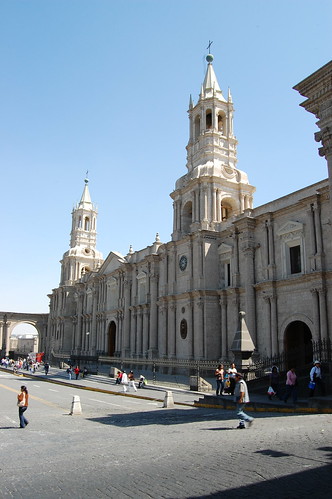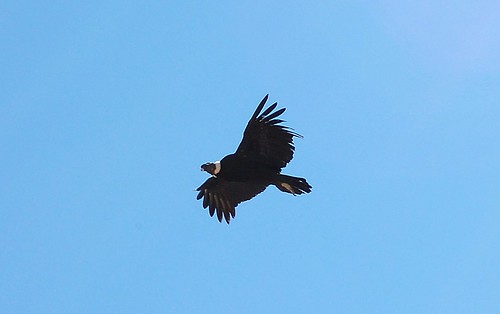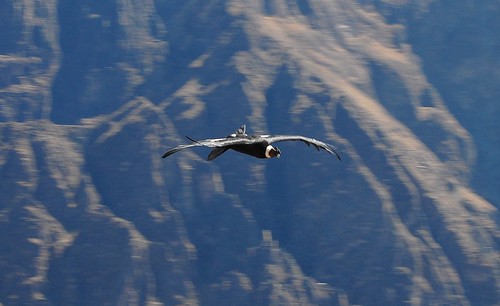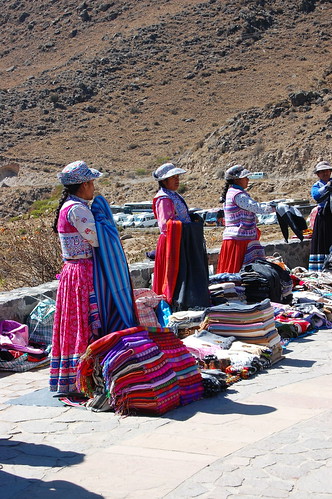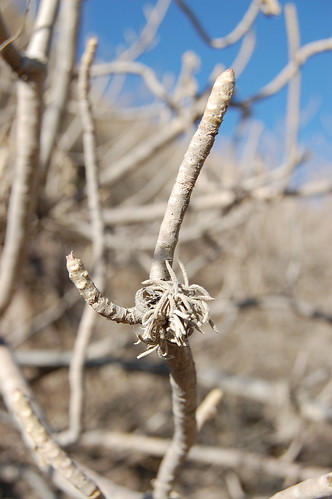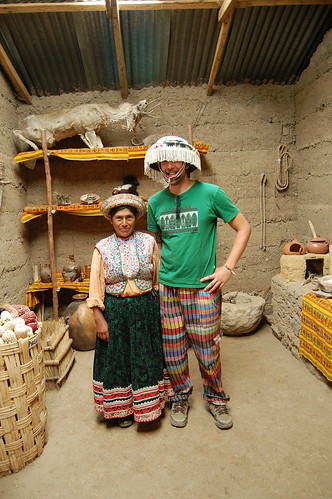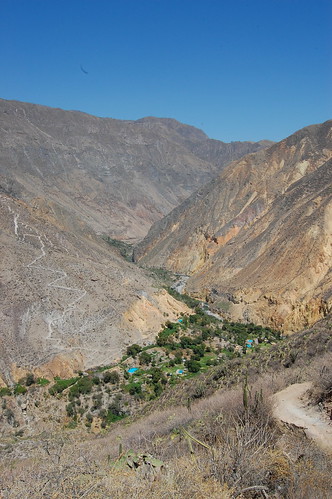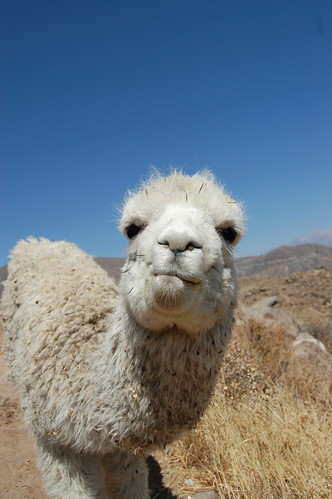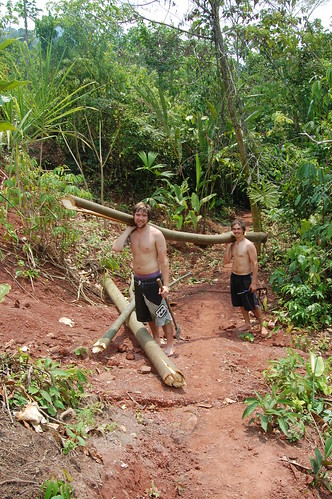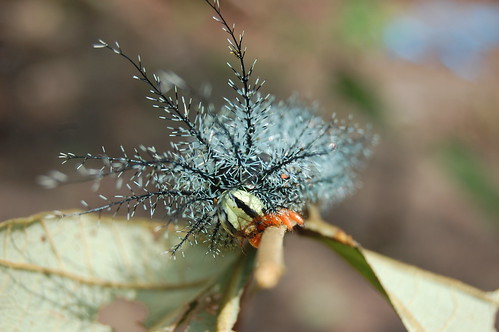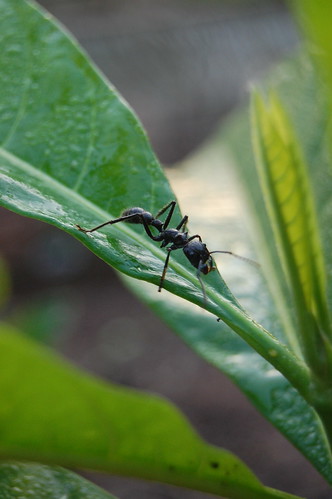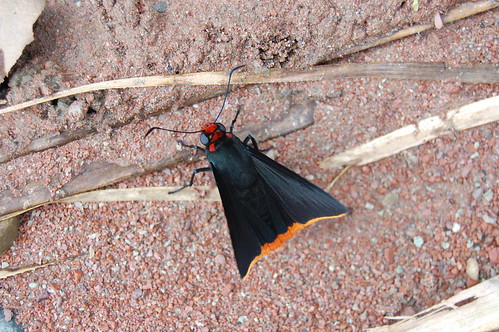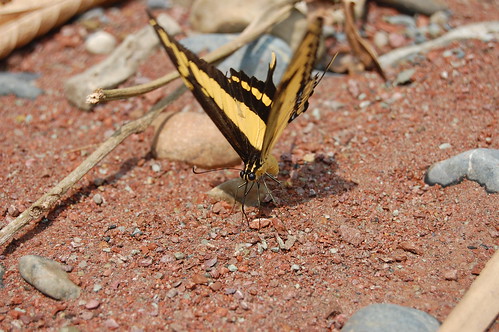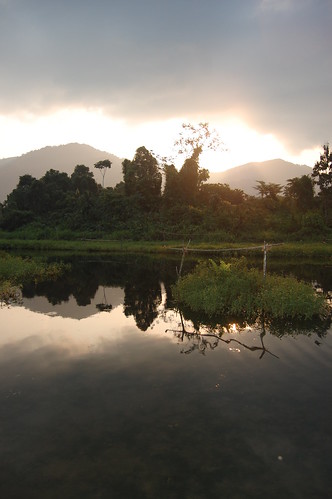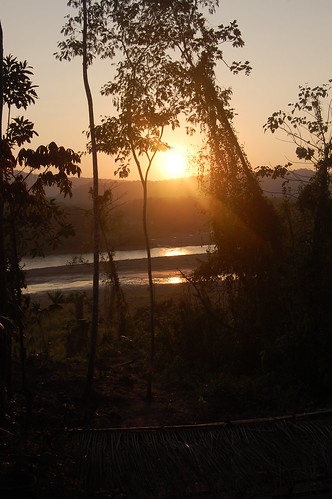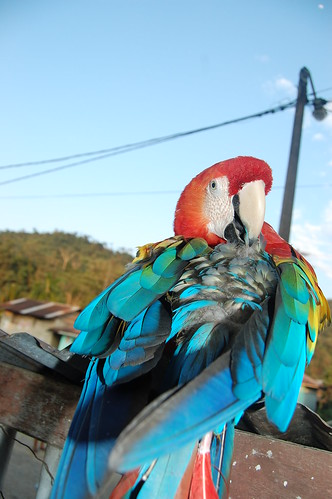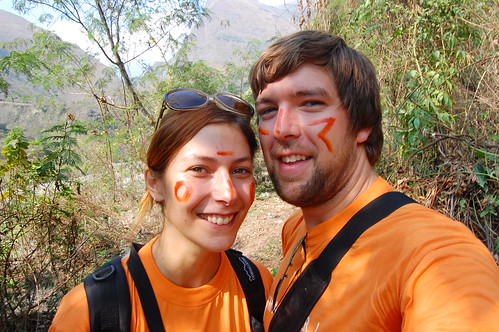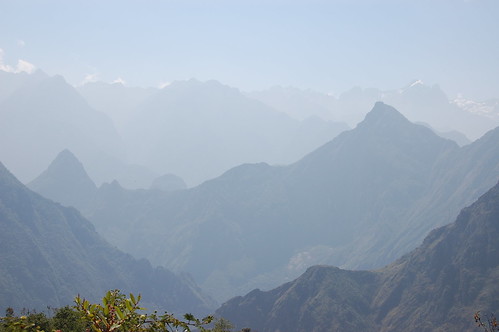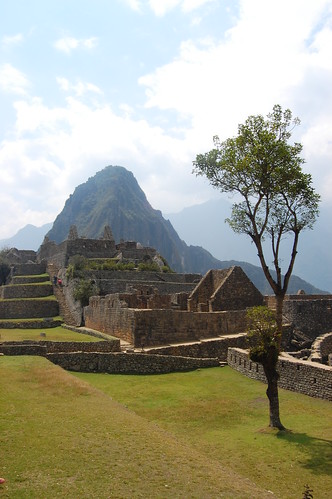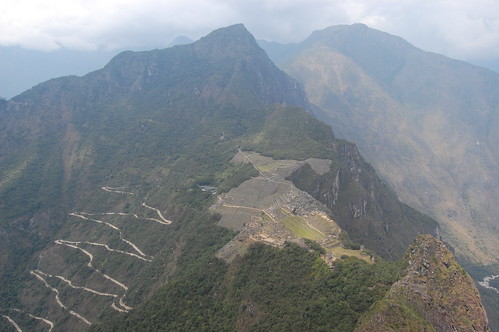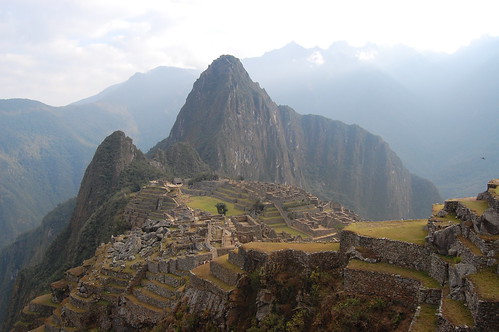This one's been a while coming. Most of you have probably heard us whining about our lost photos and the camera not working properly, so this is a rather image heavy post - partly because we've been waiting so long to post these photos, but mostly because Uyuni is a place to be seen to be believed.
The landscape changes so rapidly you can't really imagine it until you get there. The scale of the area is enormous too. We did a 3 day tour with Expeditions Alkaya, we were two of six people and it was a breath taking 3 days, if a little chilly and dusty at times (a bit of an undestatement).
We arrived in Uyuni after doing the night bus after finally checking out of the Wild Rover Hostel. We had a surprisingly good sleep on a surprisingly good Bolivian bus... we opted for the local bus which was half the price of the tourist bus and it had comfy seats that reclined, films to watch (Prince of Persia, originally dubbed in Russian, with Spanish subtitles... a terrible film anyway). And, a toilet! Apart from the very bumpy road near Uyuni it was easily the best bus journey we did in all of Bolivia.
We got to Uyuni at 6am, pitch black still, and nothing open. We found, what is best described as 3 public toilets with a side room that served tea, and sat for a while until Gladys the tour company owner came to find us. We had a quick breakfast in Uyuni and by 10am we were in the Jeep and off on day one of the tour. We actually did ours the wrong way round to get the driving out of the way first and finished on the Salar on the final day, which we weren't too sure about to begin with, but actually it worked out very nicely.
Day one:
We started out at the train graveyard, not quite as big as we imagined it to be but a fun first stop for a bit of childish exploring and climbing around dead trains. We got our first impressions of the size of the nothingness in Uyuni, but we really didn't have a clue at that point.
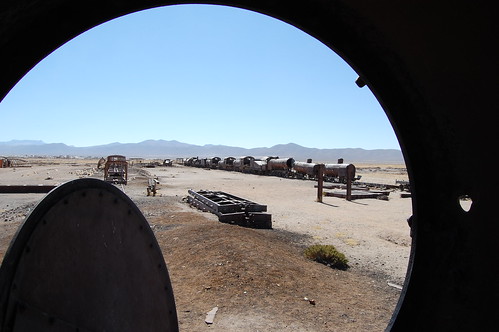
The train graveyard
After a long drive through lots of different types of scenery, via a Llama farm, rivers, desert and mountains we arrived at Laguna Colorada, a huge pink lagoon that gets it's pink colour from the same photoplankton that feeds the hundreds of Flamingos that flock there and gives them their pink pigment. Martin stitched this panoramic for us, along with all the others in our blog, we're not lazy we just don't know how he does it... I'm not sure but I think if you click on the photo it'll load in a new page full size. I may also be wrong about that.

Laguna Colorada
After an hour or so trying to get close up shots of Flamingos and walking along the edge of the lagoon, which is massive by the way, we visited a mirador (viewpoint) took more photos and then headed to our accomodation.
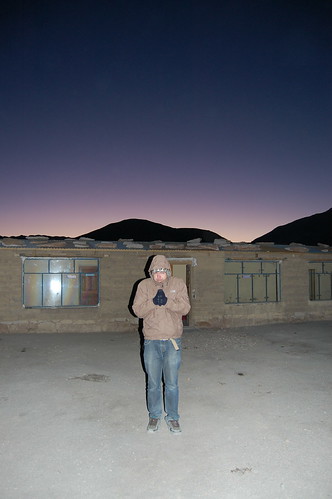
Outside the lodge, freezing my kahunas off
We stayed in some very basic brick lodgings with no heating, half the windows missing, and no mains electricity. At 8pm the generator switched off and there wasn't mush else to do (and it was far too cold... minus 4) but go to bed. We got a free bottle of wine with dinner and had to be up at 5am the next day so sleeping was easy enough once we wrapped up.Day two:
We drove for about an hour through a new landscape to get to our first stop, the volcanic area and the geysers. The sun rose over the mountains and the ground lit up orange, it looked like the surface of mars.
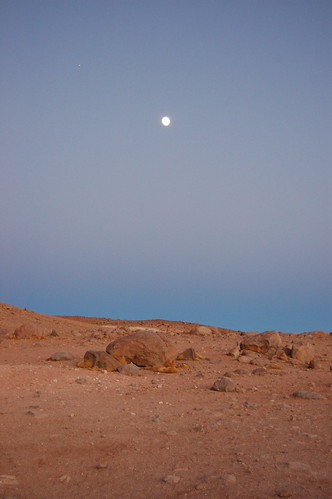
Sunrise on mars...
The geysers were amazing, there were lots of signs saying the area was dangerous and plenty of boiling pools to back it up. The first day was amazing, and this was just getting better and better. We had a jam packed day ahead of us so we had half an hour there and moved on.

The sun creeping over the site of the geysers
The next stop was the hot springs, a very welcome experience seeing as we hadn't showered for two days... those who know me will know how much I hate not having a shower in the morning! 
Reflections at the hot springs
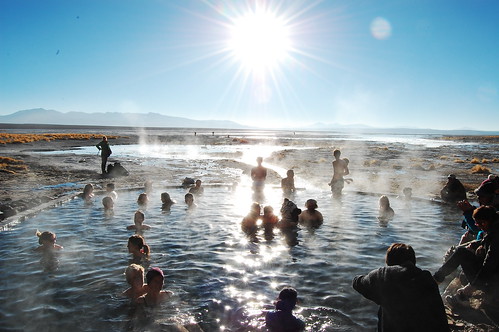 Hot bath before breakfast
Hot bath before breakfast After a refreshing bath and some breakfast, and the most expensive, disgusting toilet stop on of tour (5 Bolivianos for a poo covered "eco toilet" with no seat and an amount of toilet roll that only a vegan could cope with), we headed for some more lagoons, Laguna Verde being one of the highlights.
Laguna Verde
The landscape turned to sandy desert surrounded by volcanos of different shapes and sizes, and we headed for the Tree Rock.

Driving through the desert

Fia at the Tree Rock
We were lucky enough to see Vicuñas drinking from one of the lagoons, the rarest of the four animals in the Llama family and quite endangered. You couldn't walk within 500m metres of one of them but they didn't take much notice of the jeep as we pulled alongside them.
 Vicuñas!
Vicuñas!
Then at last we could get close to Flamingos and get some decent photos of them... This was at the "smelly lagoon", highly sulphuric. I got a bit too close. I was stalking them like some kind of idiot nature photographer and ended up trying to jump across a small pool surrounded by salt, the salt broke off just as I jumped and I ended up covered in stinky sulphur mud. Hilarious for the others, quite embarrassing for me, and that was my only pair of jeans. Luckily it was hot enough for shorts and I'd brought a 'technical base layer' with me for extra warmth (man leggings). Still it was worth it.

The Flamingo shot that left me stinky and wet
Day three:
We finished on the Salar, the World's biggest salt flat. We drove and drove and drove across the flats and it just carried on and on. Miles and miles of white salt with nothing on the horizon in most places, apart from the odd rocky island and volcano in the background - the perfect scenery for silly photos of us being attacked by King Kong and playing around with giant household objects (check out our Flickr set for the others when we've finished uploading them. We found a King Kong toy in the market in La Paz the day before and it proved to be a good buy after all.

Me drinking beer from Fia's hand...

Me taking on Kong

The salt formed hexagonal shapes literally everywhere you looked. We don't quite understand why, but it looked cool.
We finished on a cactus island, with 200+ year old cacti, some over 12 metres high. The rock the island is made of is actually ancient coral. Considering we were 4,000m or more above sea level you wonder how a sea could exist so high up. I guess that and the thousands of square miles of salt point to only one thing... a very high up ancient sea. Still hard to believe if you think about it.

Fia in front of a giant cactus
We left Uyuni and headed for Cusco via Copacabana and Isla del Sol. We've been in Cusco now for about a week and start a four day trek to Machu Picchu tomorrow. We're back with JC and Manu and look forward to 5 days in the Peruvian amazon (Manu National Park, a bit of a coincidence) the day after we get back to Cusco, partial tour, partial voluntary work. Tiring, but we're looking forward to it. I'd better pack now...
